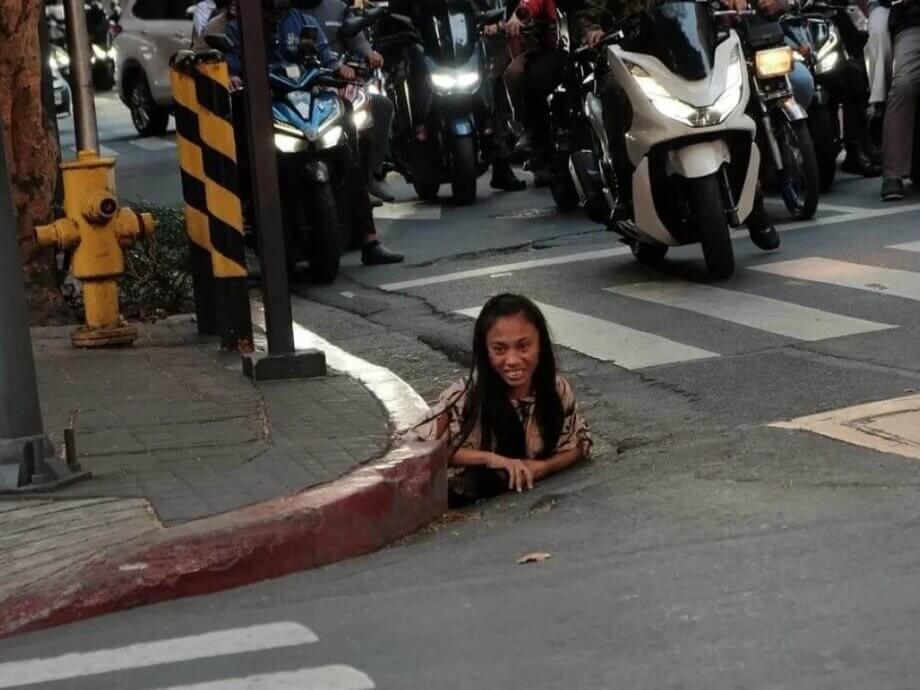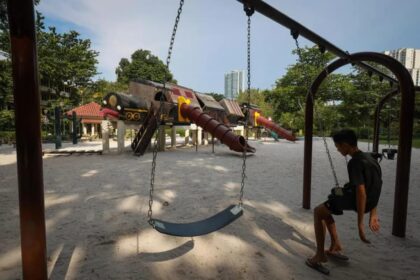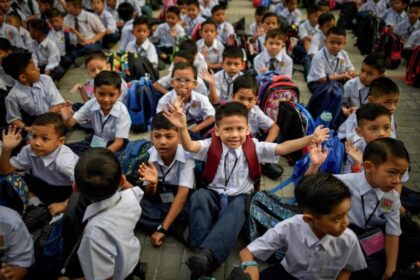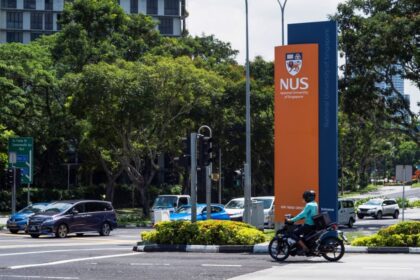The Viral Image That Sparked a National Conversation
In late May 2024, a striking image captured the attention of the Philippines and the world: a woman, later dubbed “Rose” by local media, was photographed crawling out of a sewer in Makati City’s bustling financial district. The photo, taken by hobbyist photographer William Roberts, quickly went viral, igniting a firestorm of speculation, memes, and debate about the existence of so-called “mole people”—urban dwellers who seek shelter in the city’s underground drainage systems.
- The Viral Image That Sparked a National Conversation
- Who Are the ‘Mole People’?
- Life Underground: Survival, Stigma, and Resilience
- Government Response: Aid, Criticism, and Systemic Challenges
- The Scale of Homelessness in the Philippines
- Barriers to Social Housing and the ‘Invisible’ Poor
- Public Perception, Policy, and the Path Forward
- In Summary
Roberts, who was documenting the city as part of his daily routine, described the surreal moment as he watched Rose emerge from the canal. He continued to take photos as she crawled out, only to see her run past him moments later. The images, first posted on Reddit, rapidly spread across social media, drawing thousands of comments and views. While some online skeptics suggested it was a publicity stunt, the reality behind the image was far more complex and troubling.
Who Are the ‘Mole People’?
The term “mole people” is not an official designation but a colloquial label for those who, out of necessity, find shelter in the hidden spaces beneath the city—drainage tunnels, culverts, and underpasses. In the Philippines, particularly in Metro Manila, these individuals represent the most marginalized segment of the urban poor, living out of sight and often out of mind.
After the viral incident, further investigation revealed that Rose was not alone. She was part of a small community—estimated at around 15 people—who had made a home in the drainage network near a creek by the Makati Medical Center, an area ironically nicknamed the “Makati Botanical Garden.” These individuals, including men like Jerwin and Rommel, have lived in these conditions for years, driven there by job loss, eviction, or the unaffordability of even the most basic housing.
As William Roberts continued his own investigation, he found that the authorities responsible for maintaining the city’s infrastructure were largely unaware of the extent or layout of the underground networks. This lack of knowledge and oversight has allowed these hidden communities to exist, but also leaves them vulnerable to sudden crackdowns or displacement.
Life Underground: Survival, Stigma, and Resilience
For the “mole people,” life beneath the city is a daily struggle for survival. The underground environment is harsh—polluted, unsanitary, and dangerous, especially during the rainy season when flooding can make these spaces uninhabitable. Yet, for many, the alternative is worse: exposure to the elements, violence, or constant harassment on the streets.
Despite the dire conditions, these communities display remarkable resilience and ingenuity. They scavenge materials to build makeshift shelters, share food when they can, and even take on odd jobs such as cleaning the creek or helping local vendors. As one observer noted, “Their existence isn’t determined through choice, but necessity, a brutal response to the massive problems of poverty and the lack of housing options in the Philippines.”
However, the stigma attached to their way of life is profound. Public reaction to Rose’s story was mixed, with some expressing sympathy but many others responding with cynicism or derision. Social media was flooded with jokes and memes, some suggesting that crawling into a sewer was a shortcut to government aid. This reaction, experts argue, reflects a deeper societal discomfort with the visible presence of poverty in spaces meant to symbolize progress and modernity.
Government Response: Aid, Criticism, and Systemic Challenges
In the wake of the viral photo, the Department of Social Welfare and Development (DSWD) located Rose and granted her 80,000 Philippine pesos (about US$1,435) in financial aid, even designating her an “honorary social worker” to help reach out to other street dwellers. While this gesture was widely publicized, it was also criticized as a “band-aid solution” that did little to address the root causes of homelessness.
Gino Antonio Trinidad, a doctoral researcher on urban poor settlements, noted that the novelty of Rose’s case and the government’s response fueled the story’s virality. He criticized the public’s reaction to the cash aid, which often focused on the perceived unfairness of the poor receiving government support. Trinidad argued that such attitudes ignore the contributions that even the most marginalized make to the upkeep of “world-class” urban spaces.
Arvin Dimalanta, an adviser for the Philippine Resource Centre for Inclusive Development, pointed out that the aid given to Rose was modest compared to the actual costs of securing housing in Metro Manila. With landlords typically requiring two months’ advance deposit and other moving expenses, the amount might last a family only a short time. Dimalanta emphasized that the real issue is the lack of affordable, accessible housing and the exclusion of street dwellers from existing social housing programs.
The Scale of Homelessness in the Philippines
The plight of the “mole people” is just one facet of a much larger crisis. According to a 2023 study by the Joly Homes Foundation and Association Soeur Emmanuelle Philippines, Inc., there are approximately 4.5 million homeless individuals in the Philippines, with two-thirds residing in Metro Manila. This figure includes not only those living on the streets but also the millions who inhabit informal settlements—slums, shantytowns, and makeshift communities built from scavenged materials.
Rapid urbanization and rural-to-urban migration have exacerbated the problem. Every day, thousands of Filipinos move to cities like Manila, Cebu, and Davao in search of work, education, and better opportunities. However, the supply of affordable housing has not kept pace with demand. Many low-income families are forced to spend more than 30% of their income on rent, if they can find housing at all. Those who cannot afford even the cheapest options end up in informal settlements or on the streets.
Complicating matters is the lack of clear definitions and consistent data on homelessness. The country’s laws, such as the Urban Development and Housing Act of 1992 and the Department of Human Settlements and Urban Development Act, do not explicitly define homelessness. As a result, many people—especially those living in transient or hidden conditions—fall through the cracks of official statistics and government programs.
Barriers to Social Housing and the ‘Invisible’ Poor
Socialized housing programs in the Philippines are intended to provide affordable homes for the underprivileged. However, the requirements to qualify often exclude the most vulnerable. To be eligible, applicants typically must be “structure owners” in informal settlements, which leaves out street dwellers and renters who do not have a fixed address or legal claim to land.
As Dimalanta explained, “Street dwellers and people who rent spaces in informal settlements are among those unaccounted for and ineligible for social housing, as they do not own buildings or structures. Invisible [sila] sa gaze ng authorities.” This invisibility not only denies them access to housing but also to other essential services such as healthcare, education, and legal protection.
Efforts to address the housing crisis have included ambitious government initiatives, such as President Marcos’ plan to build six million housing units by 2028. While progress has been made—over a million units reportedly built in the first year—these programs often fail to reach those most in need. Many units remain empty in rural areas, while urban demand continues to outstrip supply.
Public Perception, Policy, and the Path Forward
The story of Rose and the “mole people” has forced a reckoning with the realities of urban poverty in the Philippines. It has exposed not only the gaps in policy and infrastructure but also the attitudes and prejudices that shape public discourse around homelessness.
Police and local authorities have responded to the incident by increasing patrols and, in some cases, blocking access to drainage systems. While these measures may address immediate safety concerns, they do little to solve the underlying issues. In fact, they may further marginalize those who are already invisible, pushing them into even more precarious situations.
Experts and advocates argue that a shift in approach is needed—from punitive measures to rehabilitation and support. This includes standardizing definitions of homelessness, improving data collection, and expanding eligibility for social housing and other services. Temporary shelters, job placement programs, and community-based initiatives have shown promise in some areas, but require sustained investment and political will.
Perhaps most importantly, there is a need for greater empathy and understanding. As one advocate put it, “People like Jerwin, Bibi, Romel, the other people that I’ve interacted with, and even people like us… it often feels like we’re reduced to just numbers. What’s missing, and what I feel like could change or should change [things], is genuine empathy.”
In Summary
- The viral image of a woman emerging from a Makati sewer brought national attention to the hidden lives of the Philippines’ “mole people.”
- These individuals represent the most marginalized urban poor, living in underground drainage systems due to lack of affordable housing and social support.
- Government responses have been criticized as inadequate, with aid often failing to address systemic barriers to housing and services.
- There are an estimated 4.5 million homeless or informally housed people in the Philippines, with the majority in Metro Manila.
- Social housing programs often exclude street dwellers and renters, leaving many without access to stable shelter.
- Experts call for a shift from punitive to rehabilitative policies, better data collection, and expanded support for the homeless.
- The story highlights the need for empathy, policy reform, and a recognition of the dignity and resilience of those living on the margins of society.












